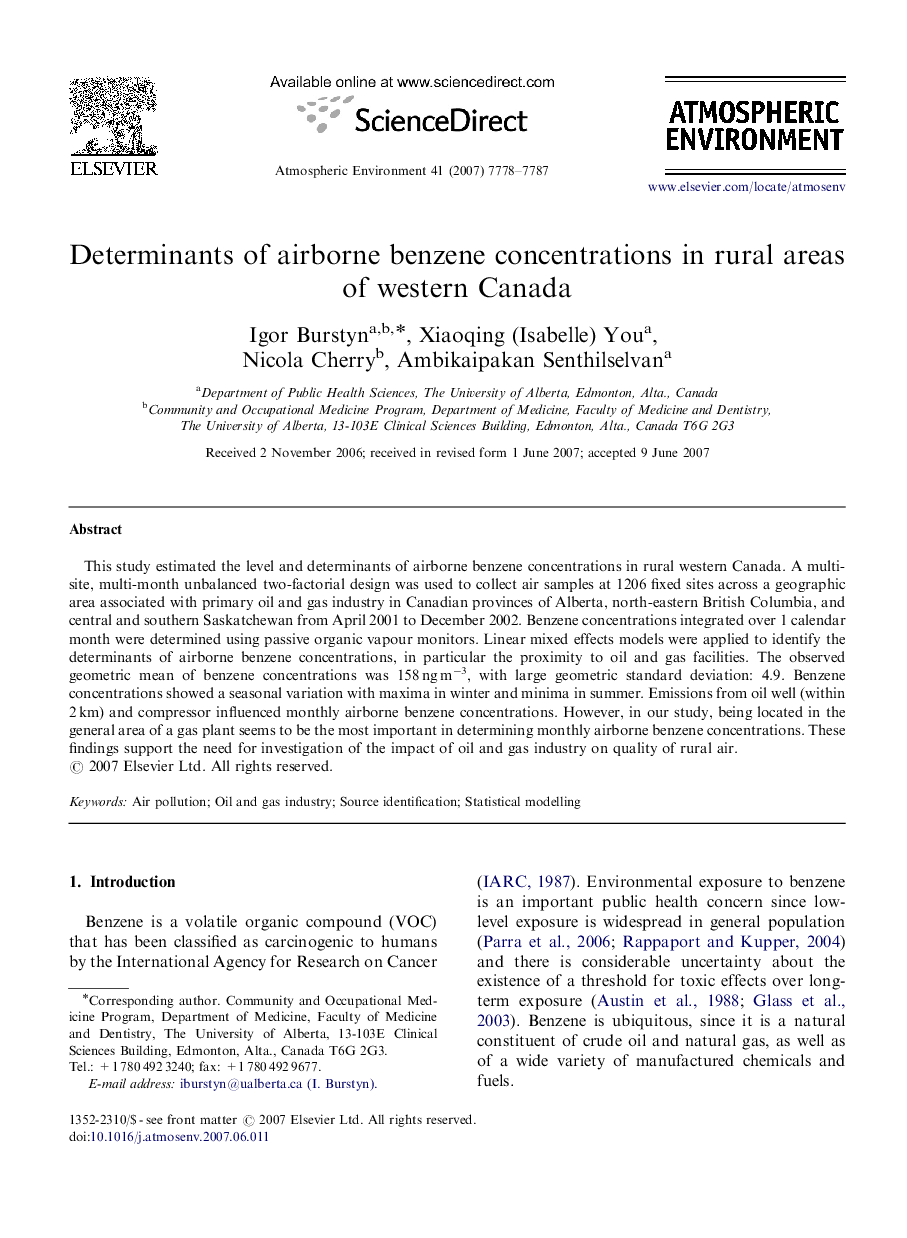| Article ID | Journal | Published Year | Pages | File Type |
|---|---|---|---|---|
| 4443108 | Atmospheric Environment | 2007 | 10 Pages |
This study estimated the level and determinants of airborne benzene concentrations in rural western Canada. A multi-site, multi-month unbalanced two-factorial design was used to collect air samples at 1206 fixed sites across a geographic area associated with primary oil and gas industry in Canadian provinces of Alberta, north-eastern British Columbia, and central and southern Saskatchewan from April 2001 to December 2002. Benzene concentrations integrated over 1 calendar month were determined using passive organic vapour monitors. Linear mixed effects models were applied to identify the determinants of airborne benzene concentrations, in particular the proximity to oil and gas facilities. The observed geometric mean of benzene concentrations was 158 ng m−3, with large geometric standard deviation: 4.9. Benzene concentrations showed a seasonal variation with maxima in winter and minima in summer. Emissions from oil well (within 2 km) and compressor influenced monthly airborne benzene concentrations. However, in our study, being located in the general area of a gas plant seems to be the most important in determining monthly airborne benzene concentrations. These findings support the need for investigation of the impact of oil and gas industry on quality of rural air.
